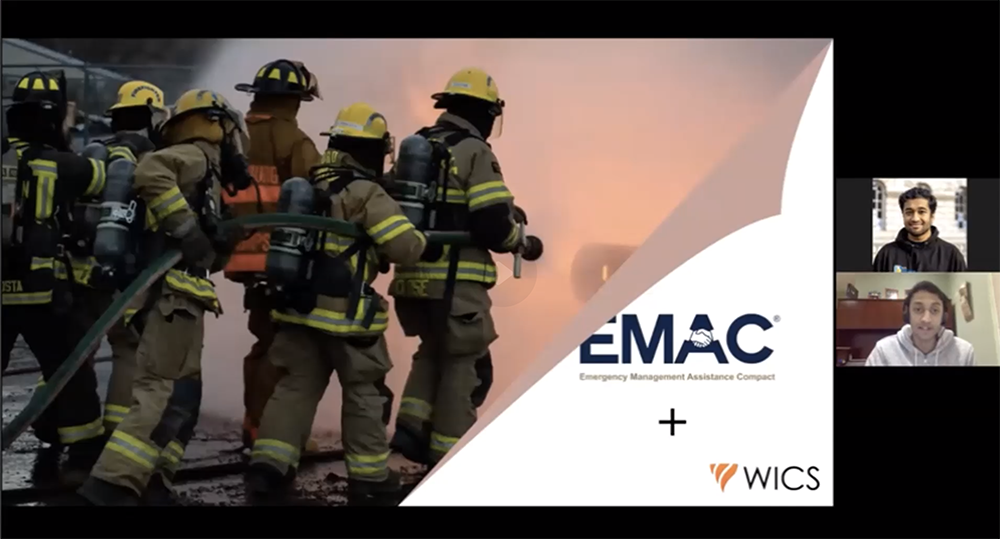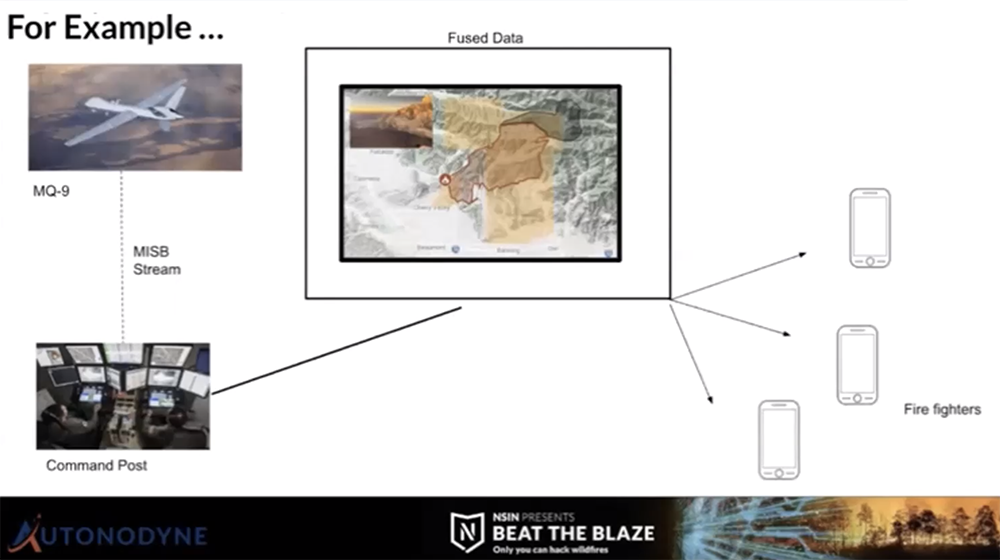Hap Arnold Innovation Center challenges teams to ‘Beat the Blaze’
163d Attack Wing innovations directorate partners with National Security Innovation Network to streamline disaster communications.

by National Security Innovation Network
May 4, 2021
WASHINGTON – More than 30 teams of innovators, including academic and early-stage ventures, participated in a recent hackathon, of which three earned a total of $45,000 in contract funding at the National Security Innovation Network (NSIN) virtual hackathon ‘Beat The Blaze,’ which concluded on April 16.
The hackathon virtually challenged participants to solve communications and information sharing challenges during wildfire operations.
Teams produced pitches to solve a problem statement crafted by leaders from the California Air National Guard's 163d Attack Wing and Hap Arnold Innovation Center.
The competition was important for two reasons, said U.S. Air Force Lt. Col. Michael Baird, director of operations for the wing's 163d Operations Support Squadron.
"This is helping us tackle a very important operational problem of data integration and dissemination," Baird said, "and it also shows how Airmen at the wing level can tap into DoD innovative resources to make an impact on the mission and the larger Air Force."
A total of 10 teams were selected to present in the final round from more than 400 hackathon registrants, representing a mix of student teams and early-stage ventures for the finalist round of pitches.
“The quality of the competition for Beat The Blaze was outstanding,” said Kedar Pavgi, NSIN Hacks Program Manager. “Our panel of judges was impressed with the quality of each pitch from our final 10 teams, the competition was fierce, and the viability of the winning solutions is promising.”
U.S. Army Maj. Gen. Matthew Beevers, California National Guard's deputy adjutant general, served as one of the competition's 12 judges as did Brig. Gen. Nick Ducich, former deputy commander of the California Army National Guard's 40th Infantry Division, who now serves as a vice director of the National Guard Bureau operations directorate.
The Beat The Blaze winners each receive $15,000 to develop their solution further and help the National Guard and first-responder end-users solve this mission-critical problem.
- Autonodyne, a venture team from Boston, MA, and its solution puting the human in a supervisory role commanding high-level behaviors.
- Perimeter, an early-stage venture team from the University of California, Berkeley. Perimeter is a situational intelligence platform that shares information between fire personnel in real-time as an incident progresses in order to protect our communities from natural disasters.
- WICS, a collaborative student team with students from University of California, Berkeley, University of California, Irvine, and Kings College, London. The WICS solution comprehensive common operating platform that enhances the mobilization capabilities of local, state, and federal bodies (like FEMA and the National Guard) by centralizing file sharing and form processing and then condensing relevant information into a single clean dashboard for high-level situational awareness.
NSIN created ‘Beat The Blaze’ based on the DoD end user demand, and was driven by multiple years of catastrophic and deadly wildfires which have impacted California, Arizona, and many states across the country in devastating ways. Recognizing the need for organizations taking part in counter wildfire operations – including the National Guard and civilian agency partners – it is imperative to have full situational awareness across a given area. Beat The Blaze focused on information and data sharing solutions.
“This is our second virtual collision event this year, and we continue to see tremendous engagement and collaboration from our participants nationwide,” Pavgi said. “From day one, the idea exchange and concept solutions for this challenge were driven by mentor guidance and customer needs.”
Strategic partners for the ‘Beat the Blaze’ hackathon are the California Air National Guard’s 163rd Attack Wing and Hap Arnold Innovation Center, ARCWERX, Arizona State University, University of California at Berkeley, San Diego State University, and the University of Washington’s CoMotion program.
Staff Sgt. Crystal Housman contributed to this report.

Kedar Pavgi, National Security Innovation Network Hacks program manager, offers opening remarks, April 16.
Kedar Pavgi, National Security Innovation Network Hacks program manager, offers opening remarks, April 16.

Beat The Blaze judges are introduced before contestants' final presentations.
Beat The Blaze judges are introduced before contestants' final presentations.

WICS team members present their pitch.
WICS team members present their pitch.

An Autonodyne pitch slide illustrates how remotely piloted aircraft data could funnel to firefighters.
An Autonodyne pitch slide illustrates how remotely piloted aircraft data could funnel to firefighters.
“This is helping us tackle a very important operational problem of data integration and dissemination.”


